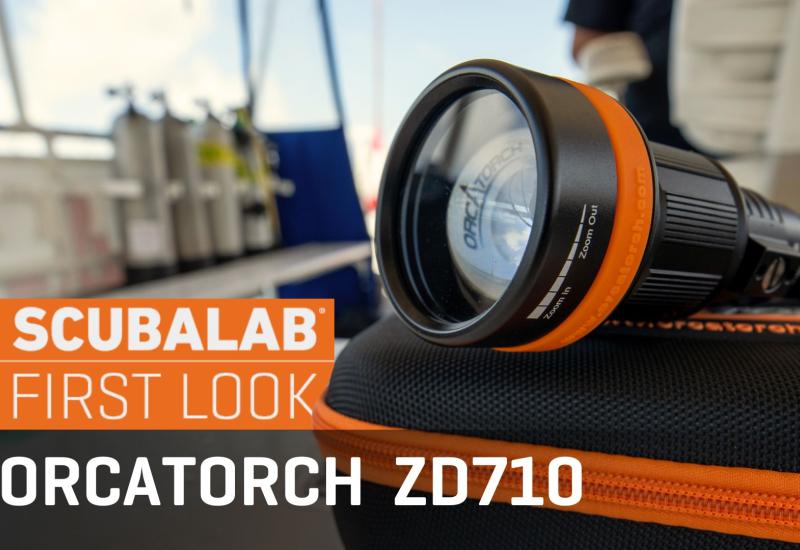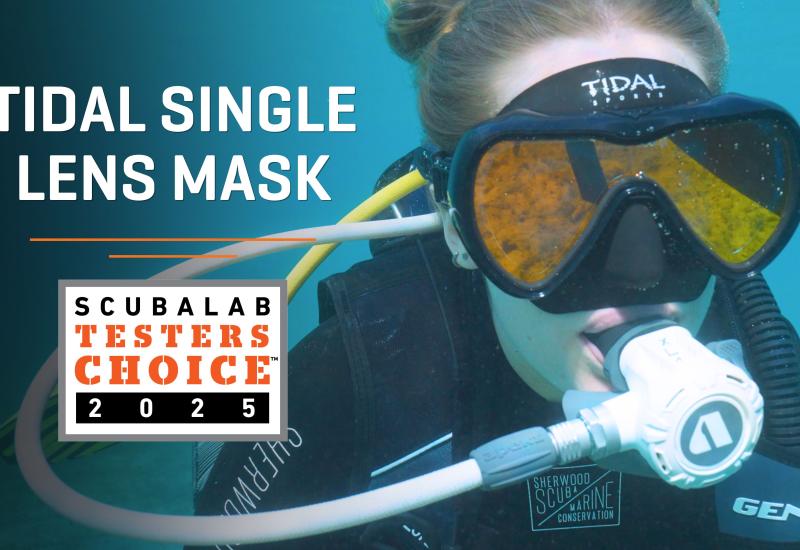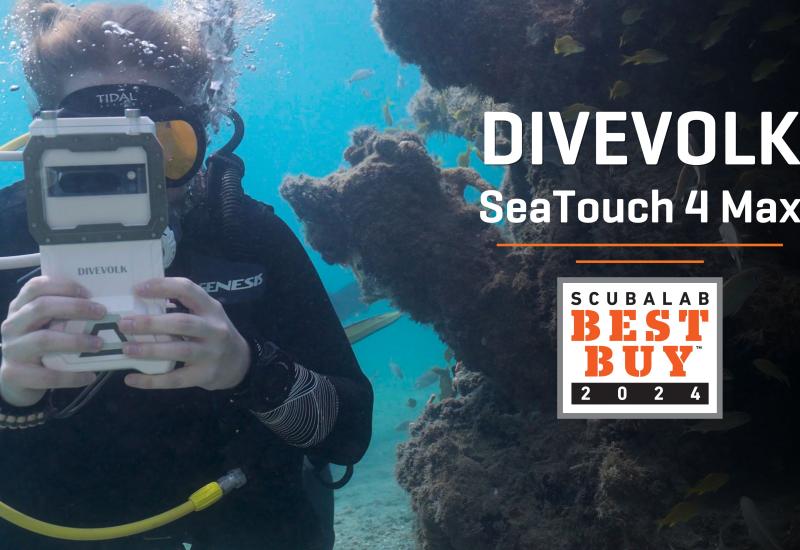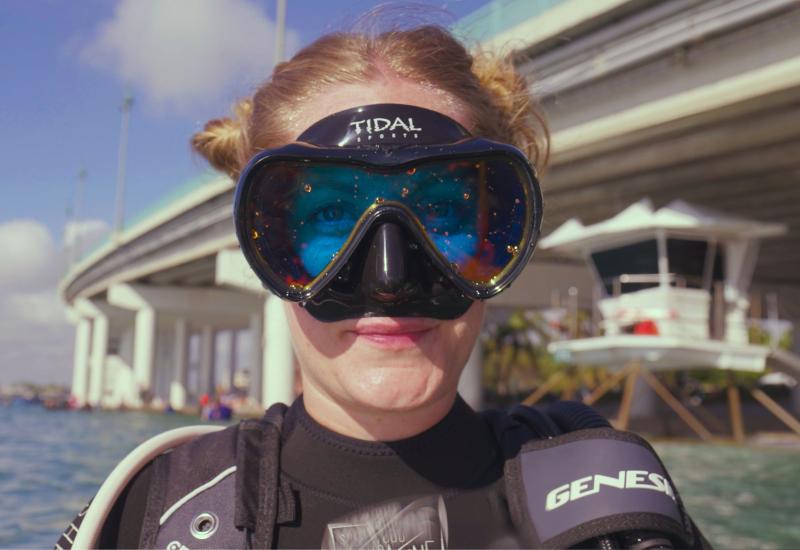Thirteen Underwater Video Lights Reviewed by ScubaLab
How We Test
Objective testing was conducted at Wilger Testing Co., an accredited, independent facility in Sarasota, Florida. Lights were tested using an integrating sphere, an industry-standard testing device that measures a light’s total output, in lumens, without regard to its beam angle; correlated color temperature, in Kelvin; and color rendering index (CRI). To gauge both the output and burn time, each light was tested twice— once with fully charged/new batteries, and again after discharging for a continuous 60 minutes. Because dive lights are designed for use in water, many will electronically reduce their output after a brief period of burning out of the water to avoid overheating. For this reason, measurements were taken immediately after turning on each light. After the first test, all lights were recharged or had batteries replaced, then allowed to burn on full power underwater for one hour, then tested again.
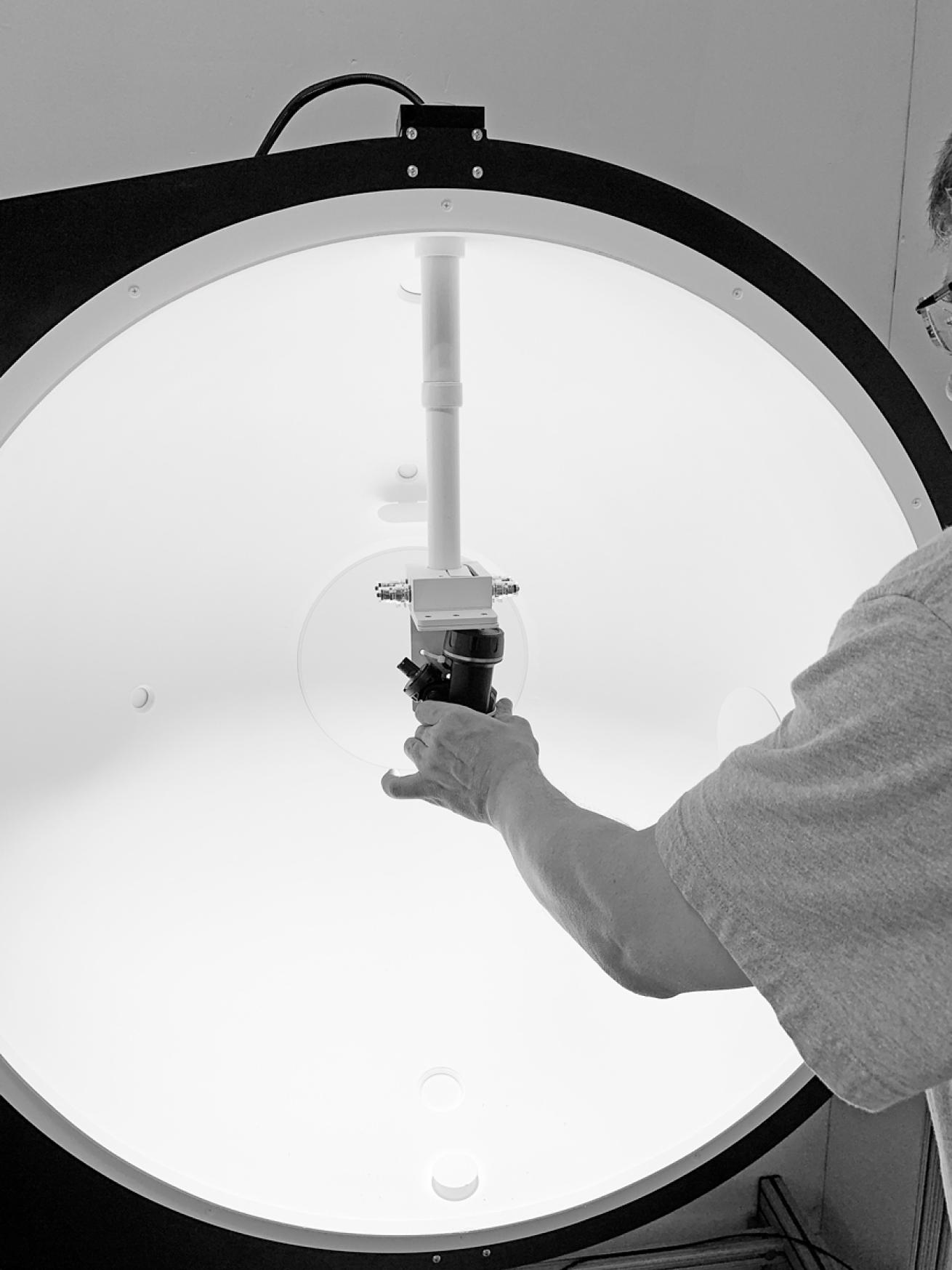
Robby MyersTesting dive lights.
Ergonomic testing was done at Devil’s Den in Williston, Florida. Test divers equipped with action cameras used underwater slates to score each light in the following categories:
Ease of Use: Intuitiveness and ease of operation of controls. Ease of selecting various power levels or modes (for example: SOS flash).
Ergonomics: Size and shape; balance and ergonomics when mounted to a tray. Security of mounting points and attachments.
Beam Size and Shape: Usefulness of the beam’s illumination underwater
LightOutput: Brightness, color, penetration and quality of the light’s beam
Power Levels: The ability to regulate the beam’s brightness in useful increments
Power-Level Indicator: Usefulness of power-level indicator or warning, if equipped
Overall Suitability: Overall usefulness as a primary underwater video light
How We Score
The graphic accompanying each review shows light output (in lumens) with a full battery and after 60 minutes’ discharge, color temperature (in Kelvin) and color rendering index.
For ergonomic testing, test divers rated the lights using the following scoring:
5 – excellent
4 – very good
3 – good
2 – fair
1 – poor
Steal The Show
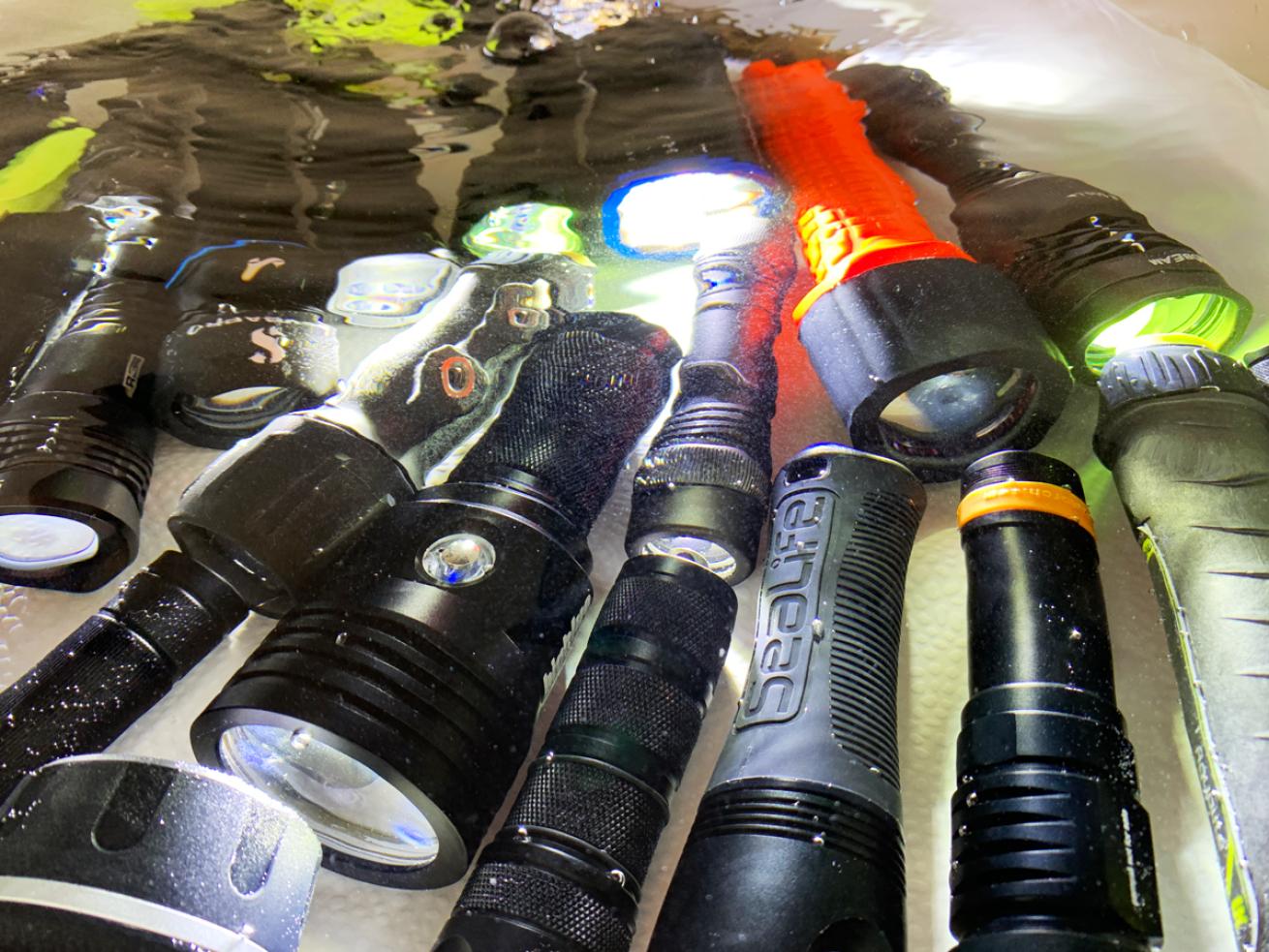
Robby MyersLights were placed underwater for testing.
Here are a few features that really stood out to test divers:
Covering All the Angles The ability to swap between a wide-angle flood and a narrow spotlight beam. The SeaLife Sea Dragon 3000SF, for example, provides additional lighting tools for macro photography and allows the light to double as a general-purpose dive light in a pinch.
Cheat Sheet Several lights, such as the Light & Motion Sola Video Pro, have operating instructions printed on the light head or near the controls.
Colors of the Wind In our test, several lights went above the typical red and blue light modes generally offered for photo and video lights. The Backscatter Macro Wide 4300’s optional physical color filters allow for a variety of bold and pastel color overlays, while the Kraken Hydra 4000 and 15000 used a combination of multicolor LEDs and digital controls to provide shooters with a whole rainbow of options.
Color-Coded
Color Temp
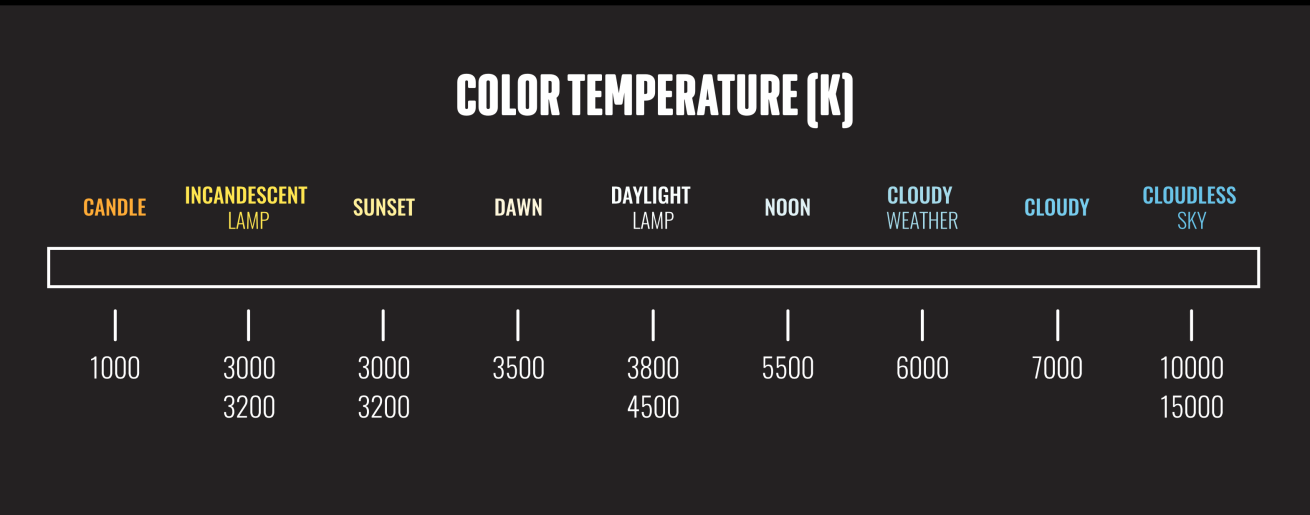
Monica MedinaColor temperature index
Correlated color temperature doesn’t tell you how hot a light source is when it is lit, but instead describes the visible color of a light’s output measured in Kelvin (K). Lights can be thought of as “warm” and “cool,” which visibly translates to more of an orange/red color for lights on the lower/warmer end of the spectrum and more of a blue color for light sources on the higher/cooler end of the spectrum. See the graphic for a few examples of where some common light sources stack up.
Color temperature is generally more of a preference on the part of the photographer or videographer, and there is no right or wrong color temperature. However, when shooting with multiple light sources it is important that their color temperatures closely match to ensure consistent-looking illumination.
CRI

Monica MedinaColor rendering index
Color is produced by light reflecting off an object. Not all lights are capable of producing the full spectrum of color. Those two things together mean that if your light doesn’t produce the specific wavelengths of light that correspond to the exact colors of you subject, your images will be less than accurate and will lack some of the subtle hues and shades that make the underwater world so compelling.
The color rendering index (CRI) is a measurement that compares a light’s output to the full-color spectrum produced by natural sunlight, from zero to 100. The closer to 100 the light’s CRI, the more accurately it represents the true color of what you’re shooting.
Results
LIGHT & MOTION—SOLA PHOTO 1200
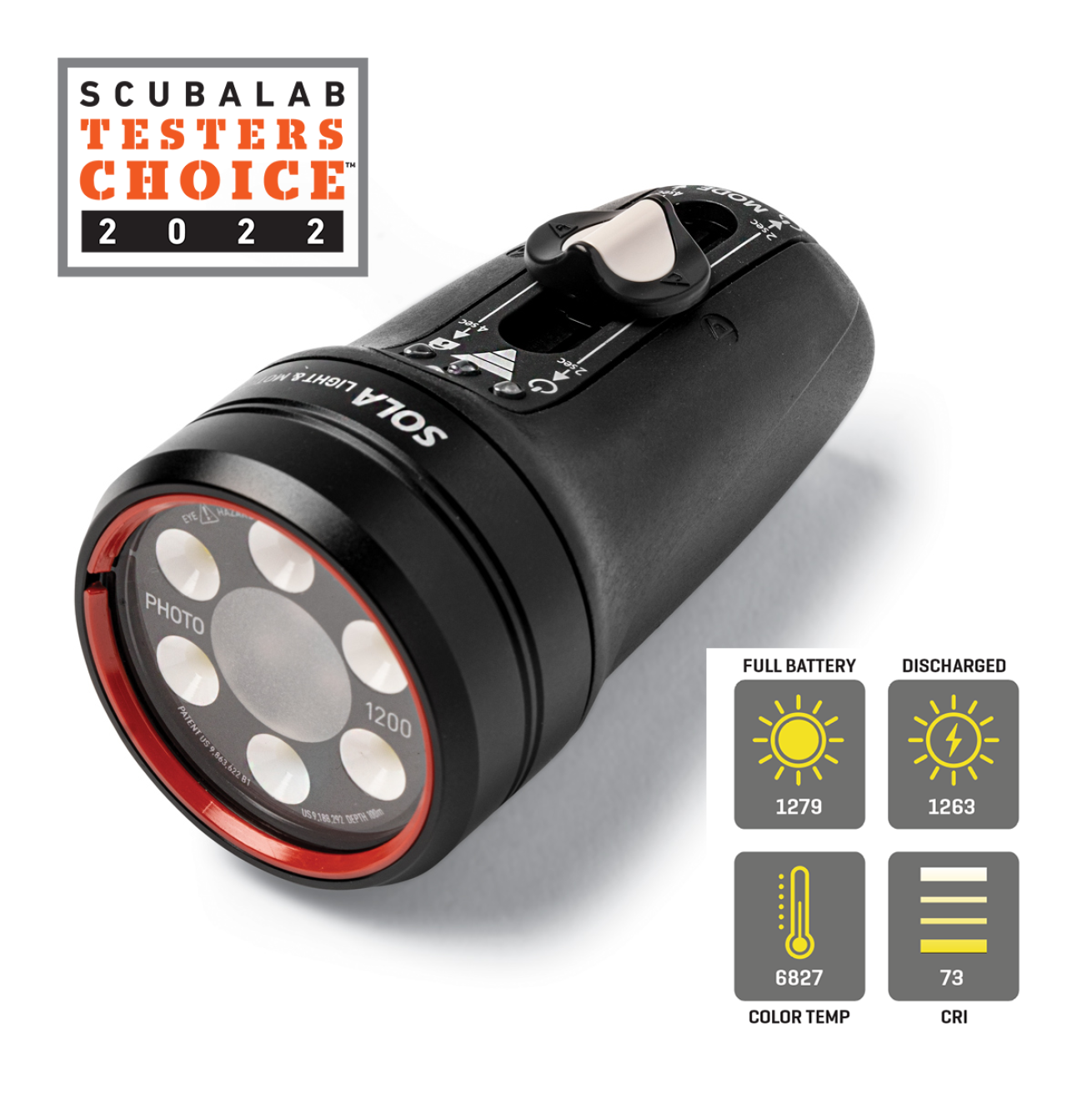
Monica MedinaMSRP $299.99
CONTACT lightandmotion.com
This light’s sliding push switch is simple, fast and easy to operate when the light is mounted to a camera arm. Pushing it forward steps through three levels of red light; pulling it back does the same for white. “Easy controls” and “slider is very easy to use” were typical tester comments. Mechanical and digital locks prevent accidental activation of the light’s spring-loaded switch while traveling. The light outputs a 60-degree beam without hotspots or a distracting edge. Testers loved the LED status indictors, which display both brightness and battery-life status. In the lab, output was slightly above the manufacturer’s claim and remained consistent even after an hour of use on high power. The sealed, flood-proof design is a plus for beginners who are worried about leaks, but the trade-off is you can’t just swap batteries when you need a recharge. The compact, streamlined design is lightweight and easy to travel with. It also makes for a solid focus light. Scoring excellent and very good across the board, and a favorite among test divers, the Sola Photo 1200 is our Testers Choice for low-power video lights.
INNOBEAM—S9W
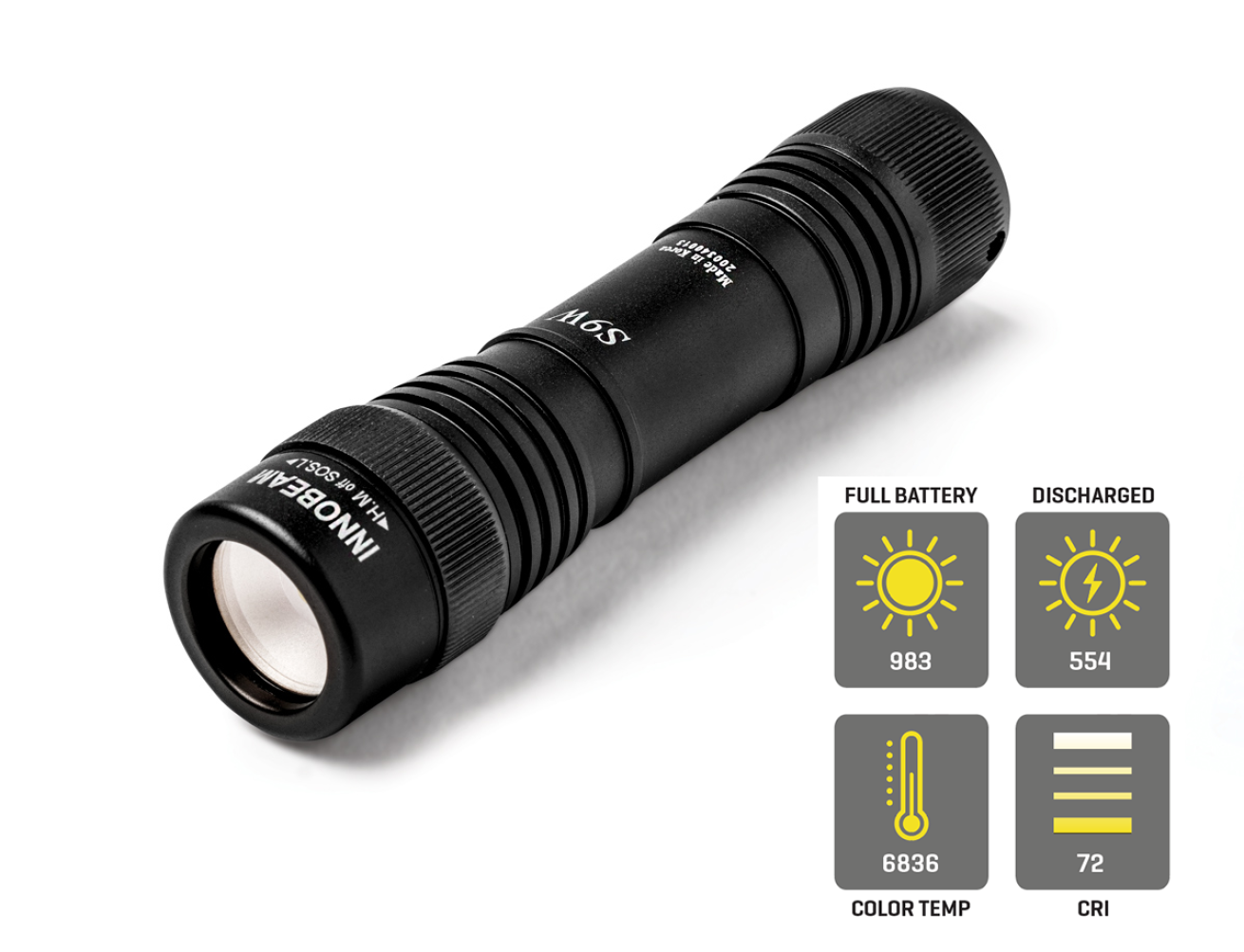
Monica MedinaMSRP $160
CONTACT innobeam.com
This light’s rotary switch scored very good for ease of operation. Rotating the switch left or right turns the light on, and turning it forward and backward in quick succession will cycle between modes—left for high and medium power, right for SOS and low power. Testers described the switch as “simple” and “easy” to use, although its forward location wasn’t as easy to access once mounted to a camera arm. “Twist is fast and convenient. Doesn’t hurt fingers like some buttons do,” one tester commented. Both in the lab and in the water, output was on the lower end of the spectrum. Even if it was dimmer than others in the test, divers still liked its cool white beam. “Beautiful color,” one diver observed. A special silver-coated reflector disperses the light’s output as a wide-angle 100-degree beam. The light can operate with either a 21700 or 18650 rechargeable lithium-ion battery, and it can be removed from the included mounting sleeve for use as a handheld dive torch. It is depth-rated to 656 feet (200 meters). Incredibly compact and lightweight, the S9W is also a capable, inexpensive focus light for still photography.
KRAKEN—HYDRA 1500+ WSR
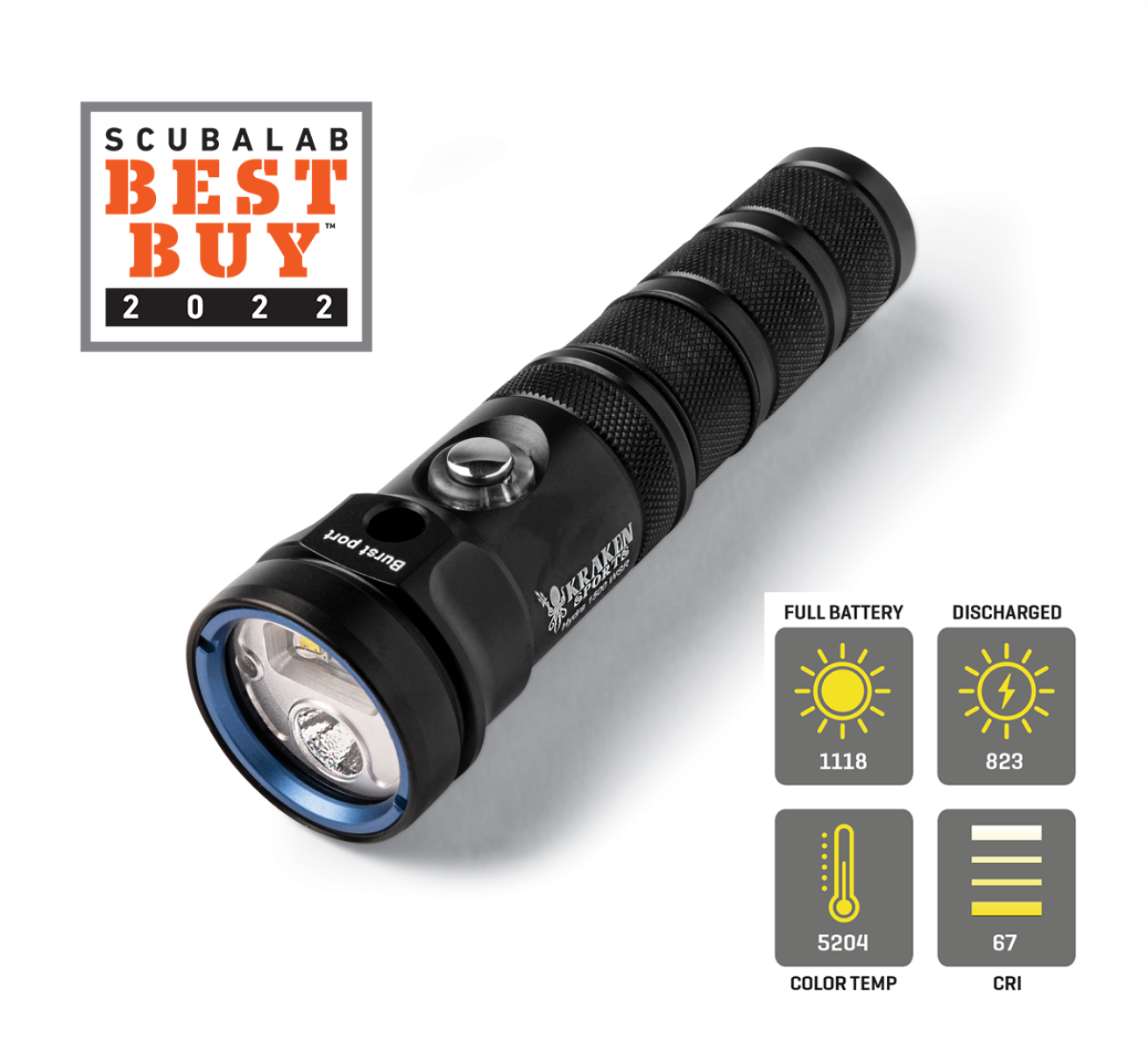
Monica MedinaMSRP $189
CONTACT krakensports.ca
With a single push-button switch, the Hydra 1500 gives shooters easy access to several lighting options. Although it can take some practice to get used to the various presses and durations needed to activate them, it’s a small price to pay for being able to choose from a 100-degree flood, 10-degree spot and a wide-angle red light—each available in three different intensities. “Wow, really nice light! Great to have choices with a real difference,” one test diver commented. Other functions include an SOS flash and user-enabled automatic flash detection. Test divers scored the light excellent for comfort and security thanks to its compact design and sturdy Y/S mount. It can even be handheld for use as a general-duty dive light. Myriad functions and a lightweight design make the Hydra an easy go-to option for traveling shooters whether they need primary illumination for a smaller video rig or a versatile tool for still-image capture. The integrated USB-C charger in the 21700 battery cuts down on gear even further. Capable and versatile, the Hydra 1500 is our Best Buy for video lights.
SEALIFE—SEA DRAGON 2000F
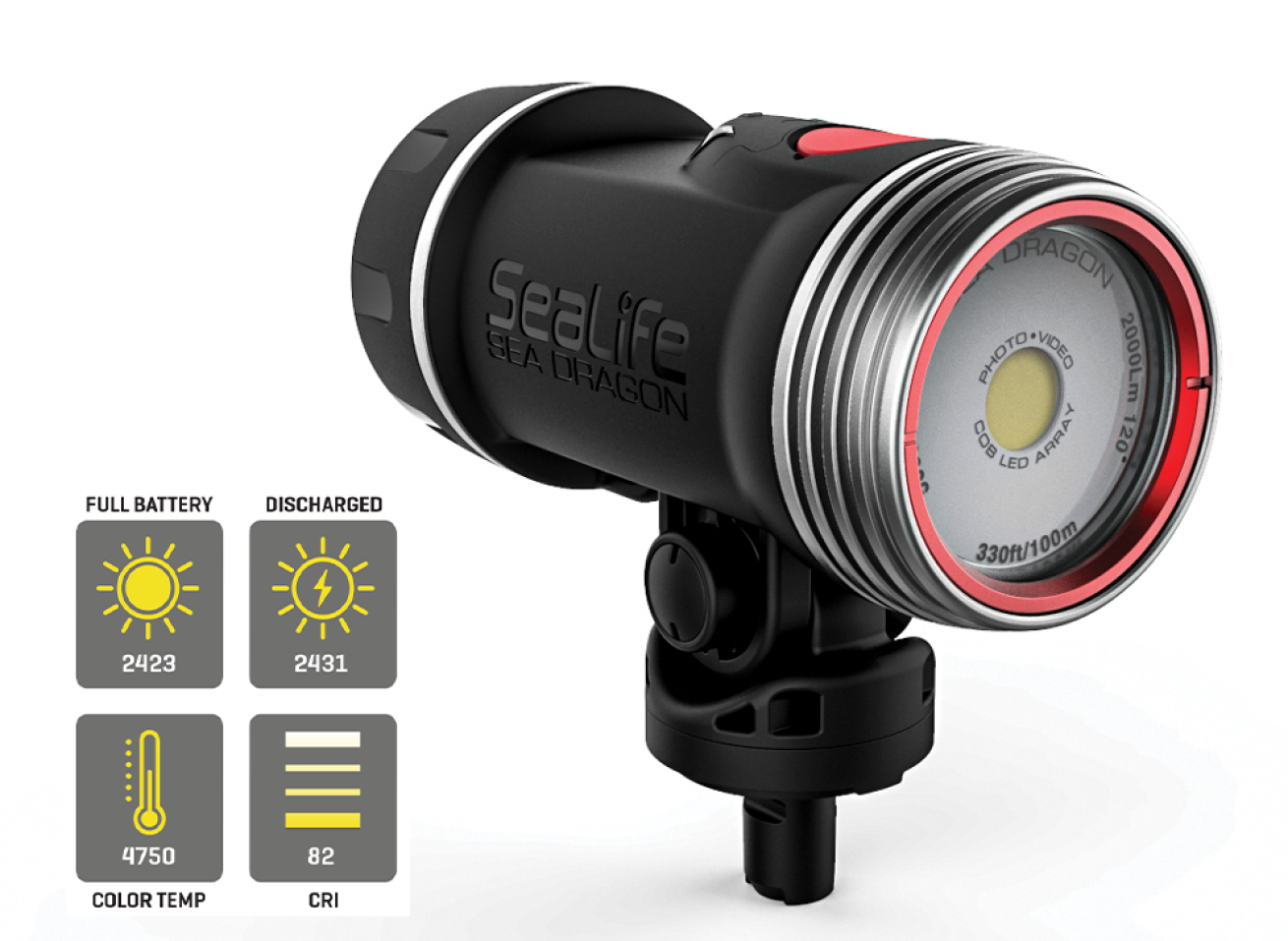
Monica MedinaMSRP $299.95
CONTACT sealife-cameras.com
This light had the brightest output in its category. It measured 20 percent over its stated output in the lab, and it increased ever so slightly after running for an hour. The 120-degree even beam provides a “nice warm color and tons of light,” as one tester described it. It provides excellent coverage for wide-angle shooting, especially with action cameras. A single large push button at the front of the light steps through full, half and quarter power. Holding the button turns the light on and off and activates the emergency flash modes. “Super straightforward operation. Very intuitive,” one tester said. The available intensities are wide-ranging and distinct, but testers felt a few more levels in between would have made even better use of the light’s powerful output. The light has a built-in mount for use with the included SeaLife Flex-Connect Micro tray and grip, and requires an adapter for use with other systems. “Lots of light, compact and simple,” is how one test diver described the light. The Sea Dragon 2000F was a favorite of several test divers.
UNDERWATER KINETICS—AQUALITE MULTI
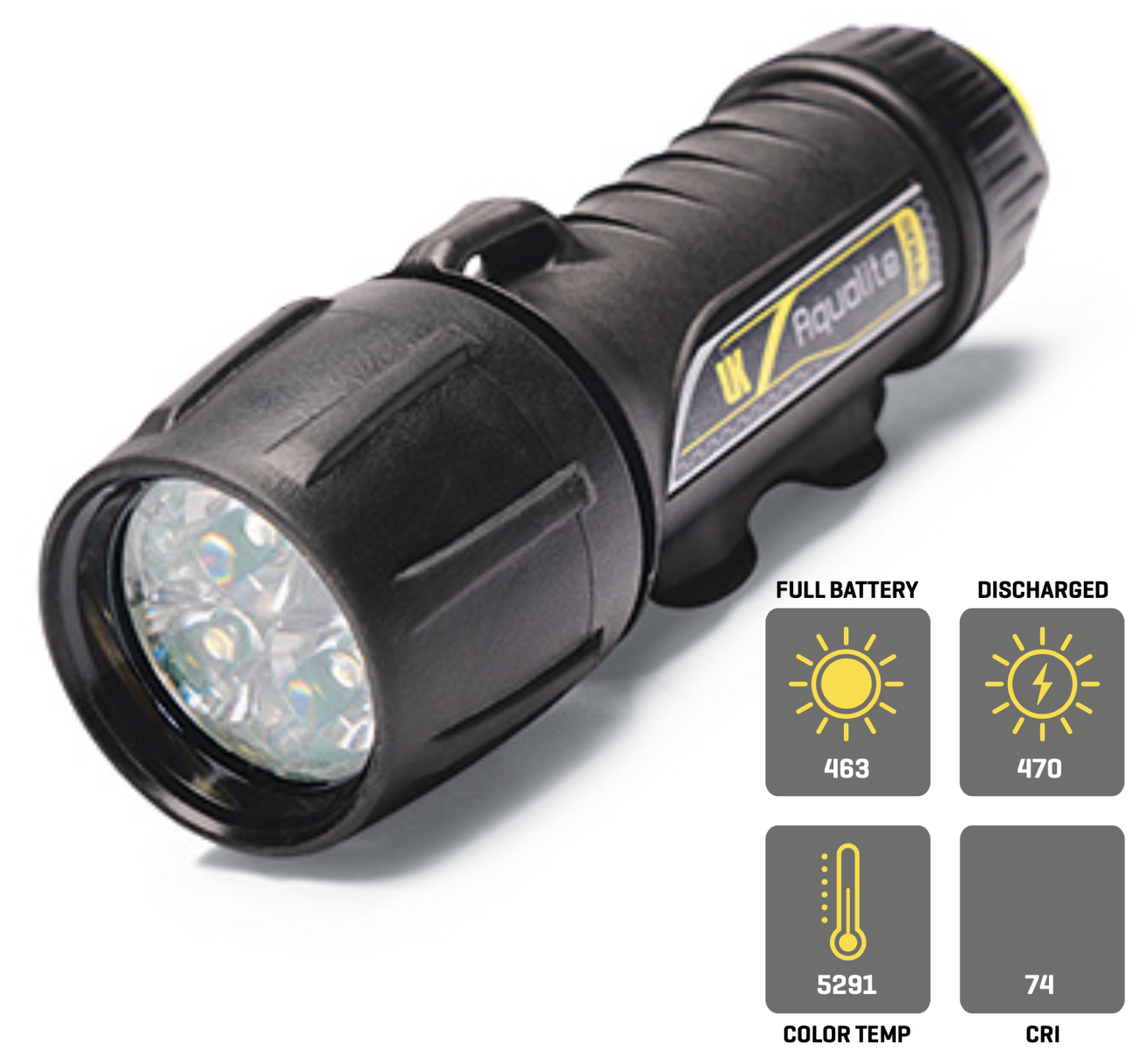
Monica MedinaMRSP $299
CONTACT uwkdive.com
This compact dive light provides a 20-degree spotlight by default, but with insertion of the included wide-angle diffuser provides a 70-degree beam for video and photography. The push-button tail switch cycles through this light’s multiple modes: two levels of white light, a single-intensity red light, UV light, emergency strobe and off. Testers felt the button was a bit stiff, but appreciated the rear-placement of the switch, which makes it easier to use the light when mounted to a camera rig. The light provides a fair amount of flexibility, but requires the user to step through each function, which can become tedious if changing modes or turning the light on and off frequently. Testers noted the two power settings felt too similar to each other to be of much use. In the lab, we measured less than half of the expected output—although the output did slightly increase with prolonged use. It should be noted that our sample was not provided straight out of the box, so the age of the rechargeable 21700 battery was uncertain.
BACKSCATTER—MACRO WIDE 4300
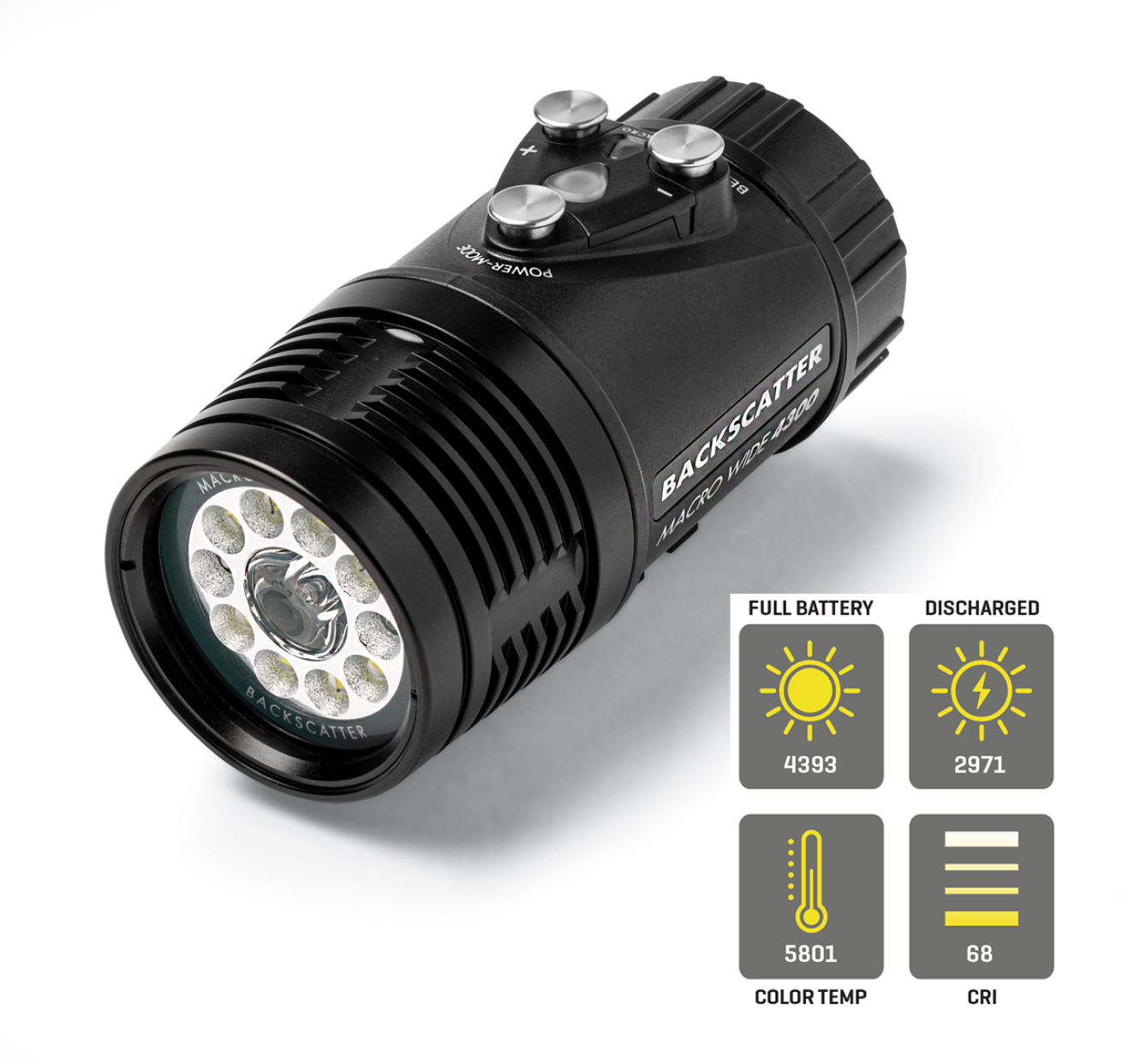
Monica MedinaMSRP $499
CONTACT backscatter.com
This light’s wide-angle beam measured the highest output in its category, and only dimmed by about 30 percent after running for an hour (stated burn time is 50 minutes). In the water, testers described the beam as having “nice, even coverage and pleasing color.” The light also has a dedicated macro mode with a 1,400-lumen spot beam and wide-angle red-light mode. Optional accessories, such as an optical snoot, color filters and a pistol grip, further increase the flexibility of this already highly versatile light. A three-button operation is intuitive for controlling intensity—the wide/red lights have three steps, while the macro light has five. Other functions, such as the customizable strobe, weren’t as straightforward. “Complicated operation,” one diver commented about accessing all of the light’s features. The light is fairly compact and includes both a Y/S and ball mount. “Nice size and balance. Big but feels compact,” one tester said. For a diver that wants a powerful, compact light that can do it all, the Macro Wide 4300 is an attractive option.
BIGBLUE DIVE LIGHTS—VTL4200P
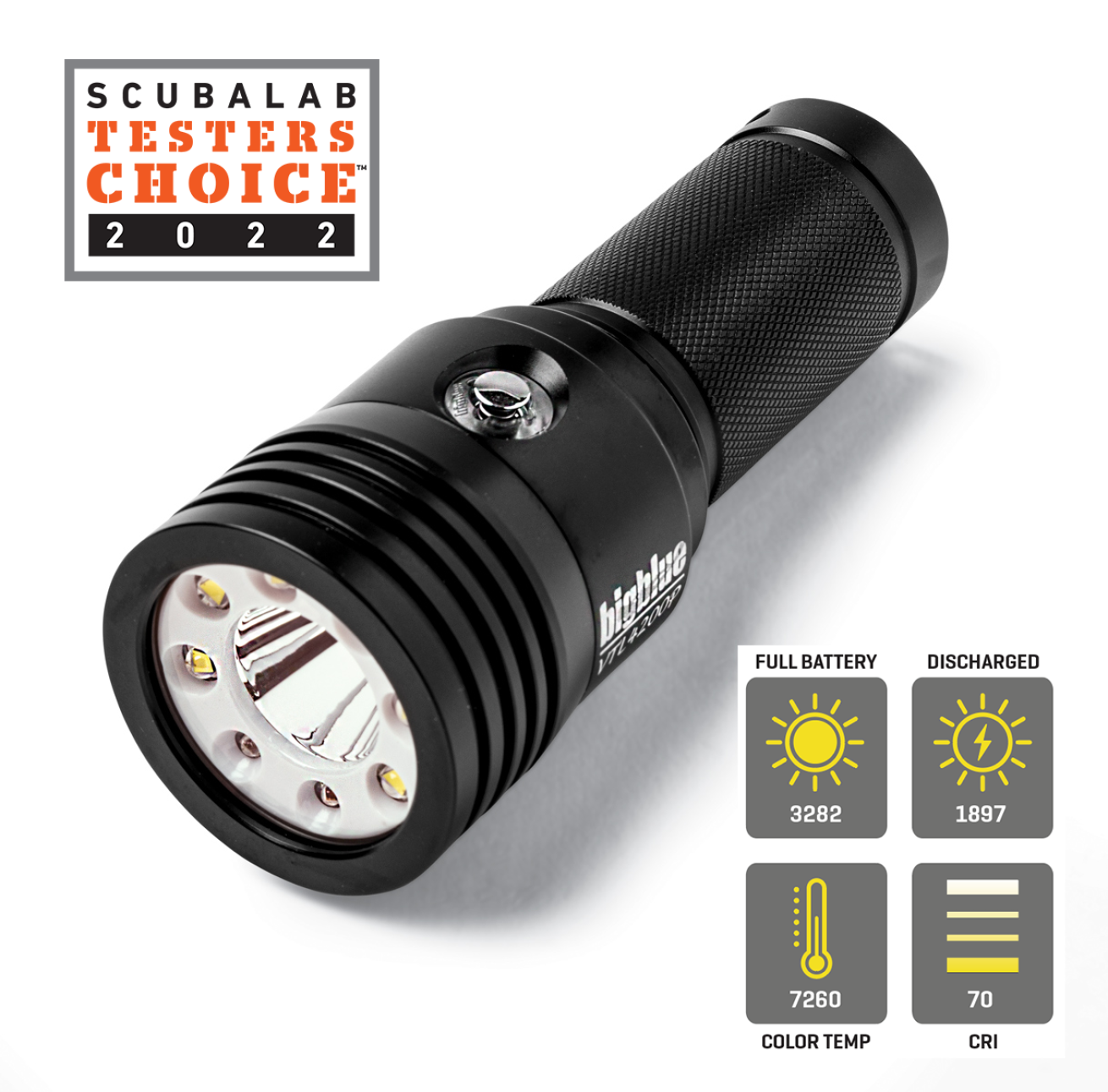
Monica MedinaMSRP $499
CONTACT bigbluedivelights.com
This light may not have been the brightest in its category, but test divers really loved how much control and versatility it offered. A push of the button cycles through four power steps of the light’s default 120-degree flood beam and off. “Good range of power and lots of output,” one test diver observed of the different settings. Holding the switch activates a spot beam, and a double press changes to red light mode—both in a single-intensity. “Nice to have options,” one diver said. The light’s default output provides plenty of coverage, even for our super-wide-angle action cameras. “Nice bright, wide light,” one diver commented. There is no SOS mode. The included ball mount is easy to install and very secure. The light’s long grip is convenient for handheld use, but also helps to maneuver the light when mounted to a camera. The light also comes with a Goodman glove, removable yellow filter and dry bag. A favorite among test divers, offering impressive flexibility and performance, the VTL4200P is our Testers Choice for medium-power video lights.
KRAKEN—HYDRA 4000 WRGBU
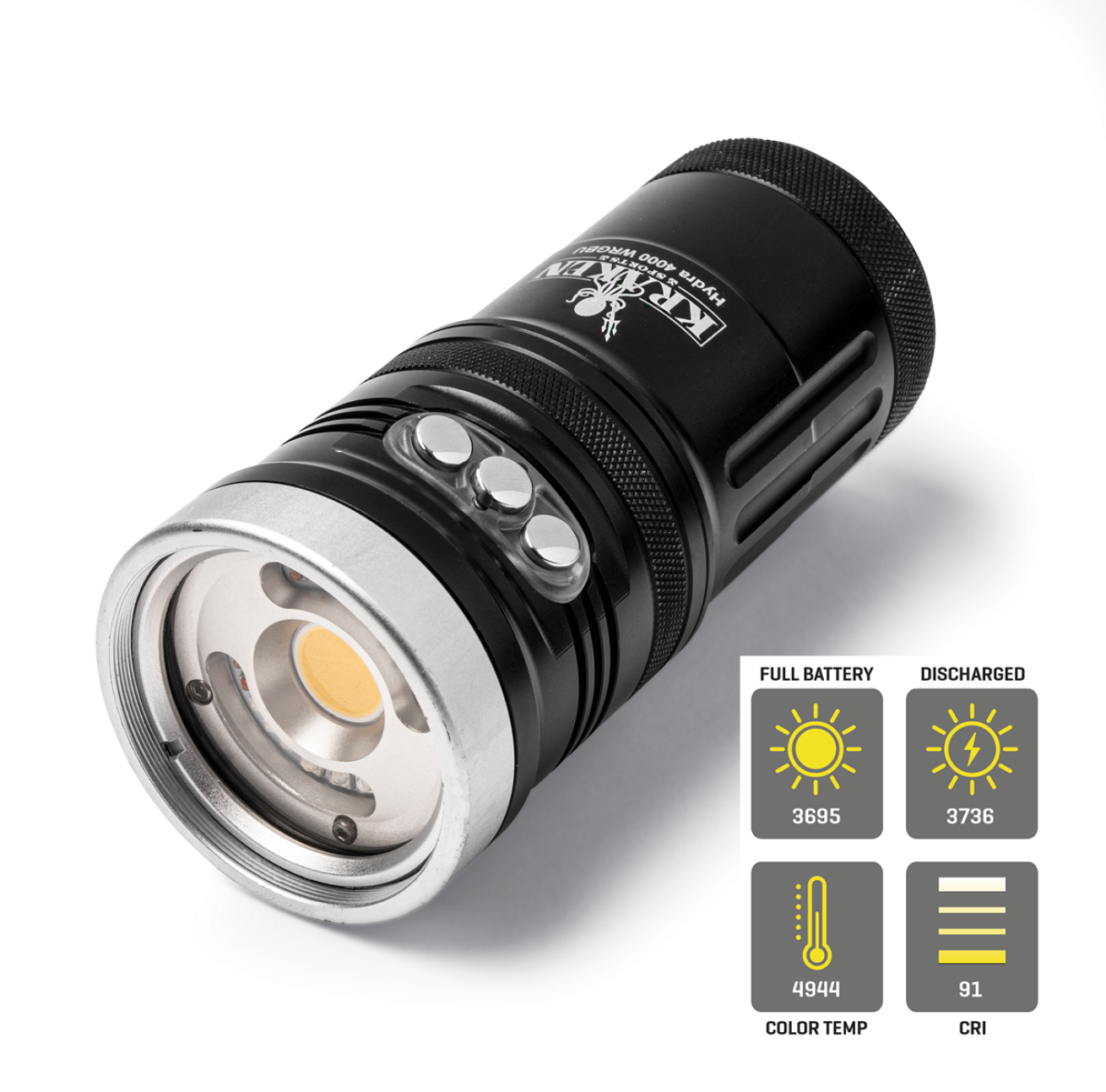
Monica MedinaMSRP $539
CONTACT krakensports.ca
This light features a three-button operation, which might appear somewhat cryptic at first, but once understood provides a simple, logical way to change modes with the center button and adjust brightness up and down with the right and left buttons, respectively. The light outputs a wide, even beam in several different colors: white, red, green, blue, UV and an adjustable RGB, which provides several premixed color options for users to pick from. Each mode is available with five power settings. It also has functions for burst mode and SOS. “Wow, so many choices,” one test diver commented. The forward location of the controls can be difficult to access when mounted to a camera arm, but fortunately the light can be controlled via an optional fiber-optic remote control. With a stated battery life of 60 minutes, we were surprised this powerful light was slightly brighter after running for an hour. The Hydra 4000 was a favorite of test divers, who were impressed with this light’s powerful output and excellent color options for creative shooting.
LIGHT & MOTION—SOLA VIDEO PRO 3800
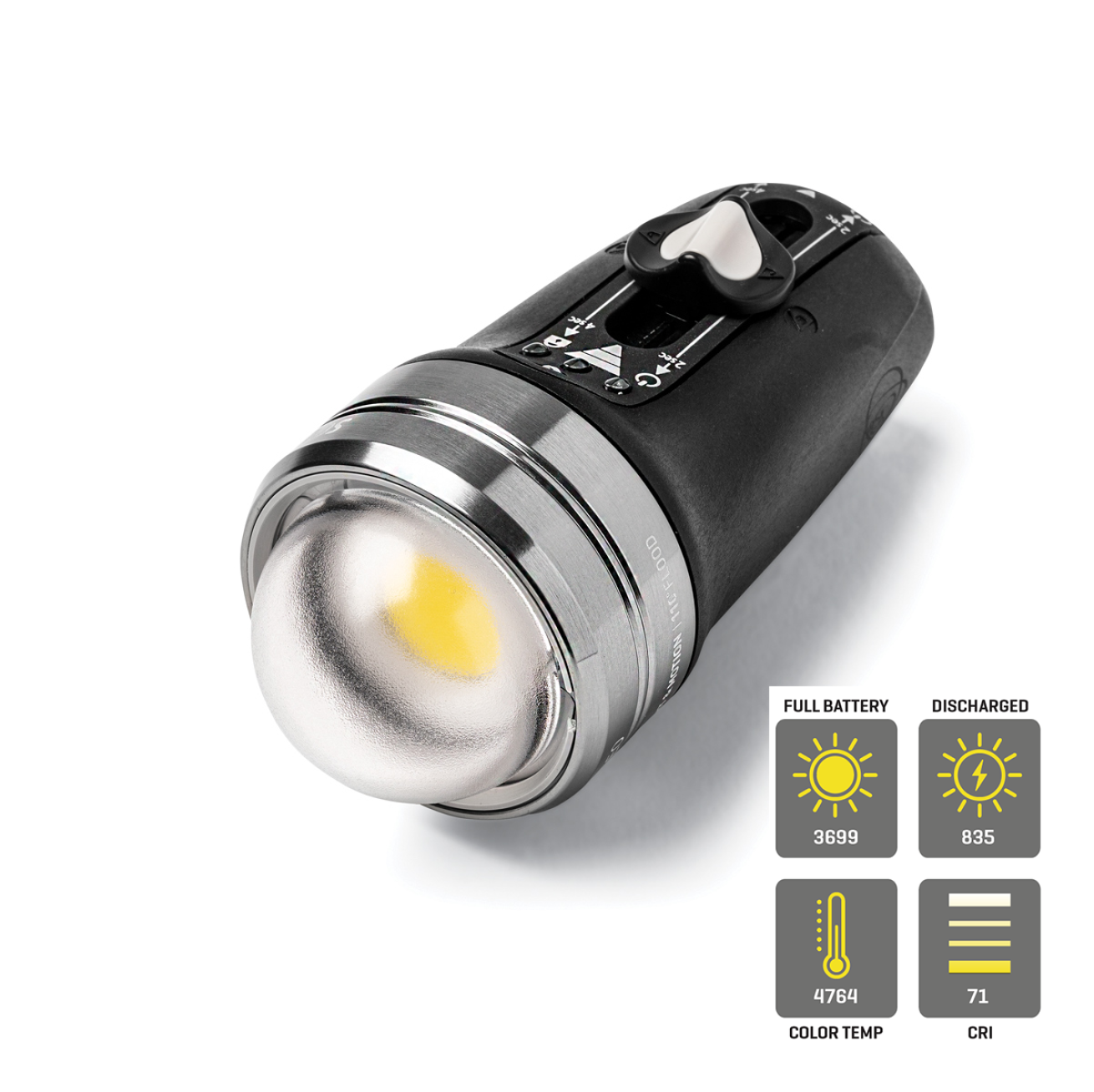
Monica MedinaMSRP $499.99
CONTACT lightandmotion.com
Outfitted with a specially designed dome port, this light provides a 110-degree diffuse beam that bathes subjects with soft, even light. “So soft I can’t find the edge,” one diver quipped about the beam’s super gradual, almost imperceptible fall-off. “Great wide-angle beam with nice color and good, even coverage,” one tester said. Even though it had the second highest lumen output in its category—which was a mere 3 percent off the advertised claim—testers felt the super diffuse light seemed a bit dimmer than other similarly powered lights. One tester described the push-lever operation as “simple and quick.” It was made even easier by the diagram printed on the body and by three color LEDs that indicate both intensity and battery life. Testers loved the light’s compact size for its convenience and light weight. Its dimensions make it easy to use with any size camera rig. “Good balance and size,” one test diver commented. At max output, the built-in rechargeable battery lasts about an hour, and charges to full in an hour and 45 minutes.
SEALIFE—SEA DRAGON 3000SF PRO DUAL BEAM
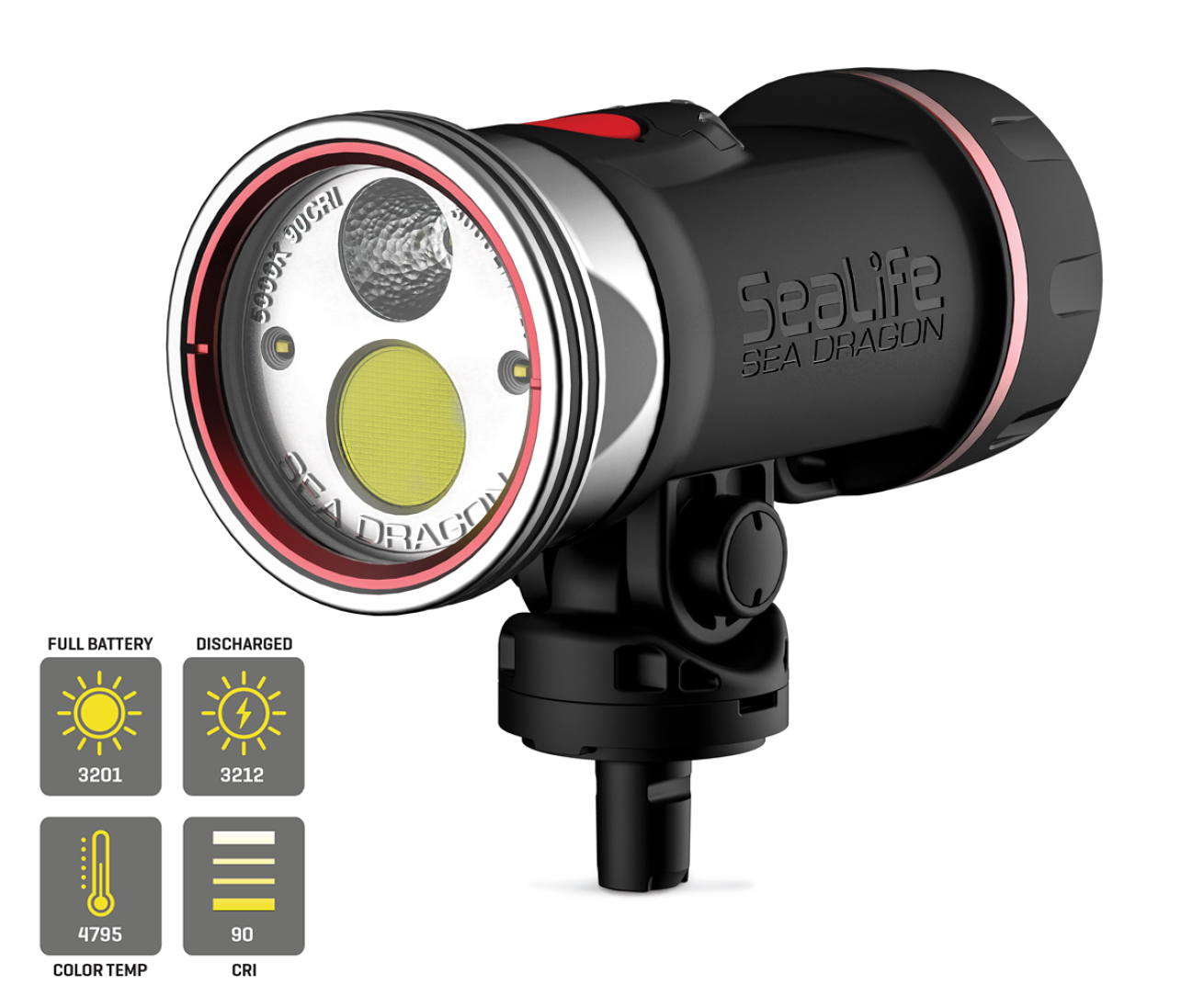
Monica MedinaMSRP $549.95
CONTACT sealife-cameras.com
While it may not be the most powerful light in its category, this light was still slightly brighter than its advertised 3,000-lumen output, and it kept its output consistent even when pushed to the limits of its 60-minute burn time. A large single push button provides easy access to the light’s functions. Once on, pushing the button cycles between a three-intensity 120-degree flood, two-intensity 15-degree spot, and a single-intensity red flood light. Holding the button down while powered off provides access to two emergency flash modes. “Very handy, with easy accessibility,” one test diver said. “Intuitive operation,” another commented. Divers did note that the flat button and top-mounted battery indicator can be a bit difficult to access when the light is positioned away or above the diver. The built-in mount provides easy plug-and-play compatibility with the included Flex-Connect tray, but requires an adapter for other systems. The wide-angle beam is soft and warm, with even coverage throughout. “Great size, power and functionality,” is how one tester summed up the Pro Dual. It was a favorite among test divers.
BIGBLUE DIVE LIGHTS—VL10000PB-RCP
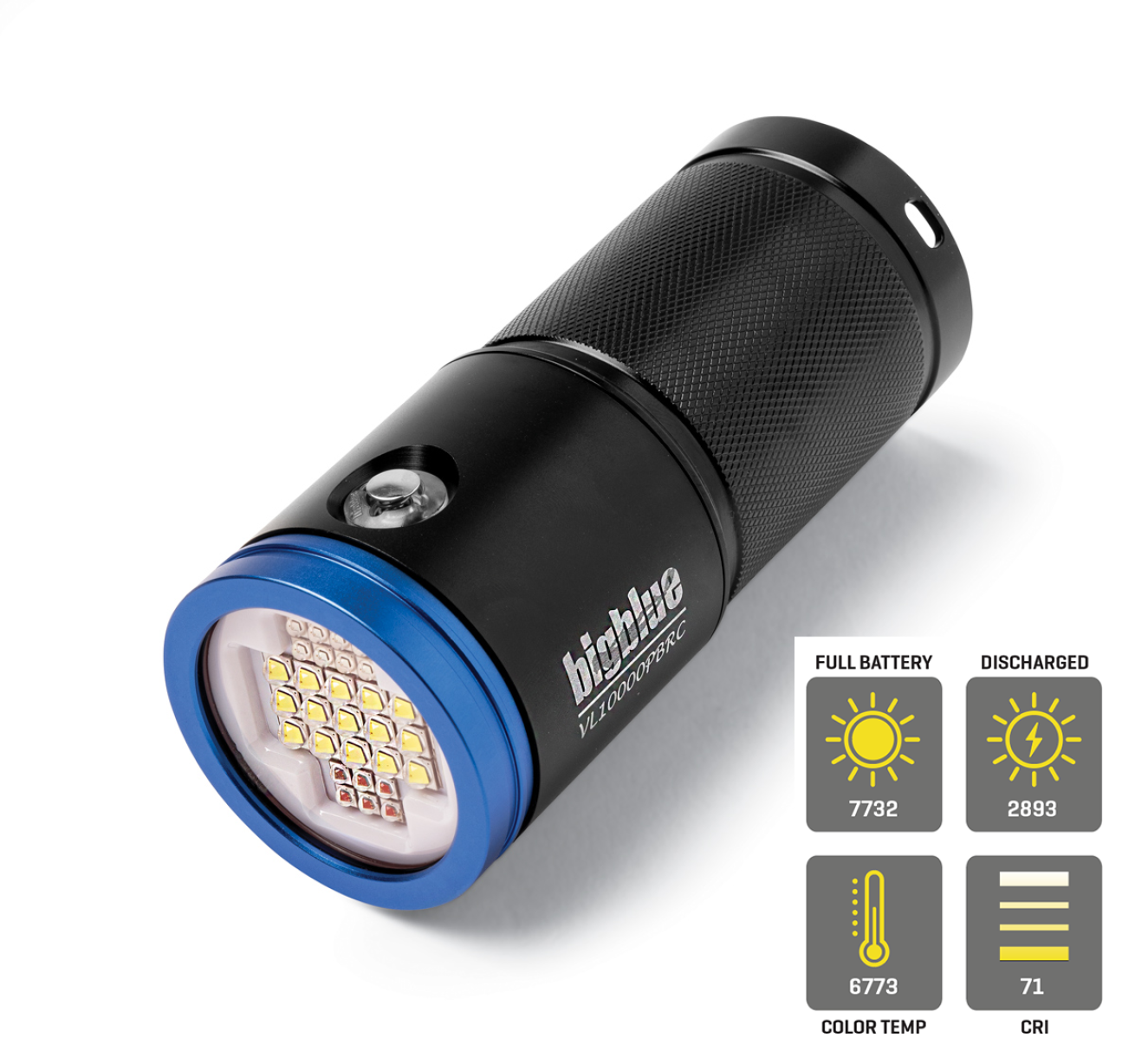
Monica MedinaMSRP $899.99
CONTACT bigbluedivelights.com
This light packs a lot of power and features into a compact package, which is similar in size and weight to many of the lower-power lights in our test. The responsive button cycles through white- and blue-light modes— each with three intensities—with just a push. Hold the button to access the SOS, or double push it for a single-intensity red floodlight. The included remote puts the switch at your fingertips and was described by test divers as “awesome” and “simple and easy to use.” In the lab, output was almost 30 percent less than the manufacturer’s number. However, it was still bright enough in the water that some test divers felt that they would have liked an additional low-power setting. The wide 120-degree beam is cool white with a defined but gradual edge. “Bright and powerful,” one tester observed. The inclusion of the fiber-optic remote, which can control two lights at once, is an excellent value. Also included are a ball mount, removable yellow filter, Goodman glove and dry bag. Offering flexibility and convenience, it was a favorite among test divers.
KRAKEN—HYDRA 15000 WRGBU
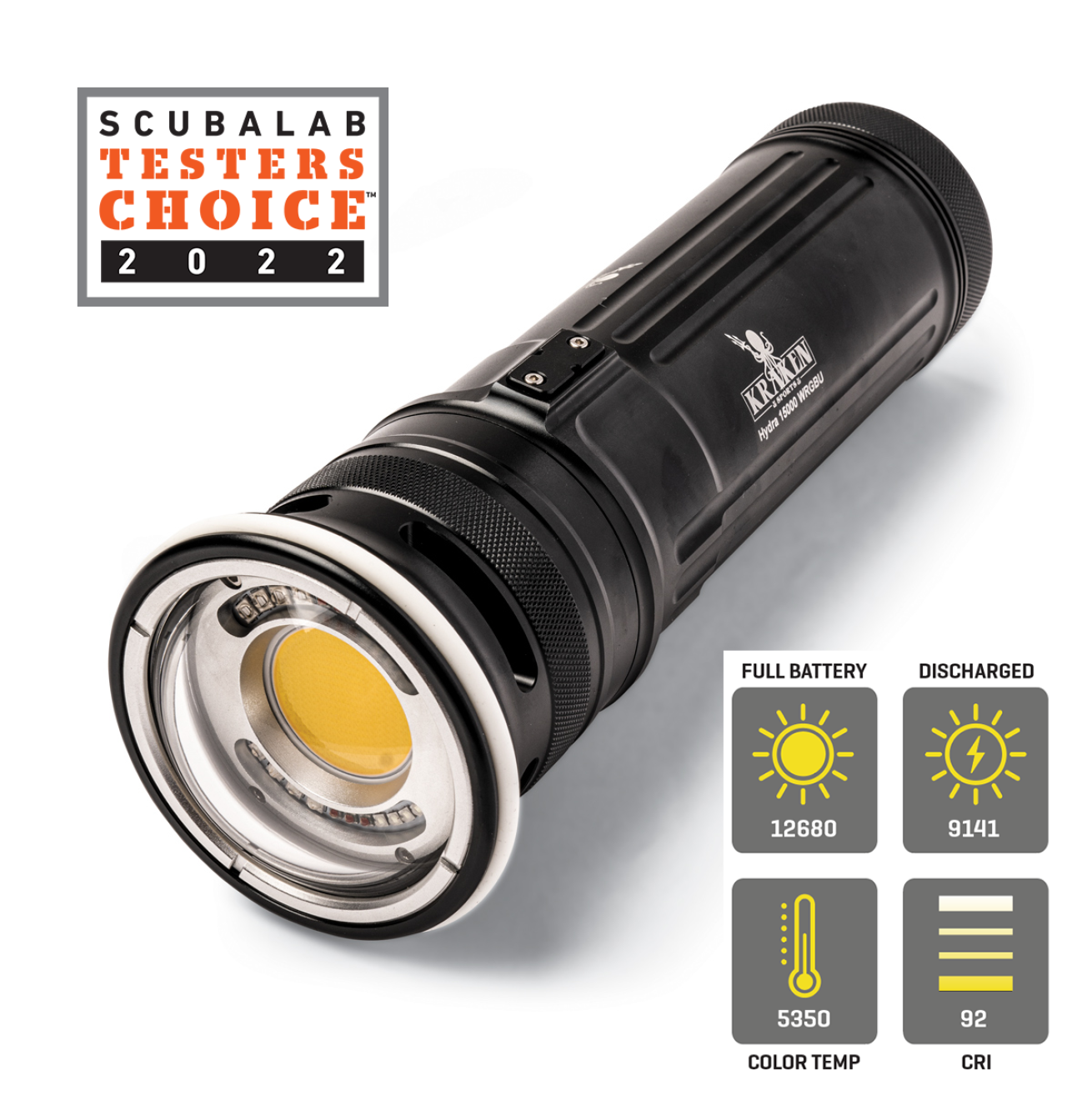
Monica MedinaMSRP $1,150
CONTACT krakensports.ca
This beefy light’s rear-mounted controls couldn’t be easier to access while shooting. A knurled dial adjusts brightness and other settings, while the integrated push button cycles modes and confirms selections. “One of the easiest methods of adjusting I’ve used,” one tester said. Users can choose between white, red, green, blue, UV and manual RGB modes, and the rotating dimmer dial provides 11 power levels for each—except for the RGB mode, which instead has 60 pre-mixed color options. The built-in dome allows for a super-wide 120-degree angle beam with a noticeable, but gradual, fall-off. “Great range with really clear, bright light,” one tester said. The included Y/S and ball mounts can be attached to either the top or bottom of the light. The LCD display, which clearly indicates mode, brightness and battery, can also be rotated. Fiber-optic ports let you control up to two lights via remote or fire the light like a strobe. A favorite of testers, with a powerful wide-angle beam, accessible intuitive controls and overall versatility, the Hydra 15000 is our Testers Choice.
LIGHT & MOTION—SOLA VIDEO PRO 15000
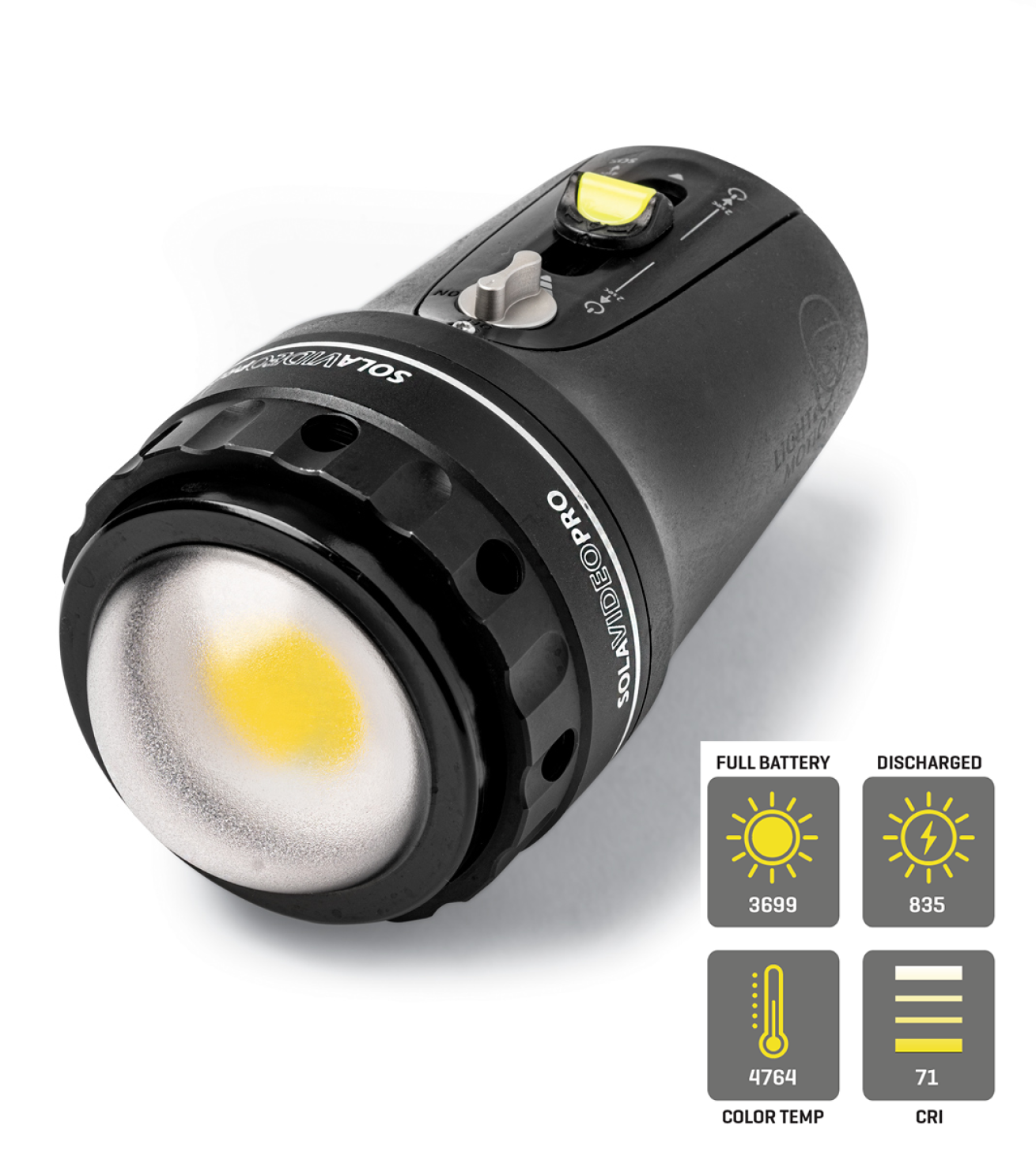
Monica MedinaMSRP $1,499.99
CONTACT lightandmotion.com
This light’s push-lever control uses a dedicated on/off switch to prevent accidental activation. Once on, pushing and pulling the lever quickly and intuitively steps between seven different power levels. Holding it forward or backward allows the user to fine-tune output by 100-lumen increments from 15,000 to 500 lumens. “Amazing! So much control,” one diver said. This light had the highest lumen output in our test. Divers felt the beam was impressively wide and smooth, with even illumination and an almost imperceptible edge thanks to its gradual fall-off. “Very bright” and “huge soft beam lights up everything very well” were typical tester comments. The light only runs for a stated 35 minutes at high power, so its nonremovable battery will need charging between dives if maxing out output. Fortunately, the rear LCD screen displays output in lumens and an estimated burn time for the current brightness, so divers can conserve battery power. It can also be outfitted with optional GreenWater or BlueWater filters for matching natural light in open water.


